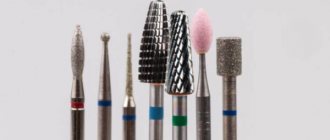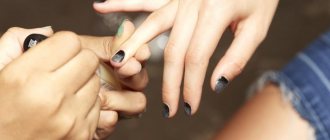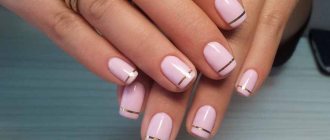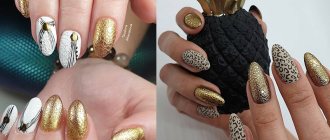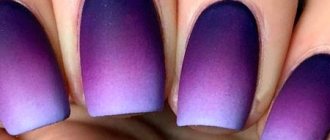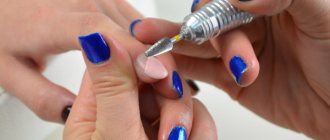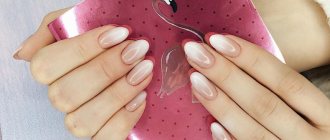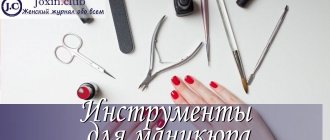Professional devices designed for treating nails, cuticles and side ridges have become an indispensable attribute of most nail salons. Appreciating the ease of use and excellent results, many fashionistas purchase devices to be able to do a beautiful manicure at home. When choosing a device, you must remember that it requires manicure cutters.
Some manufacturers offer milling cutters with several attachments included. However, often, it does not satisfy all the needs of the owner. In addition, they wear out with use and require replacement. Therefore, women have to independently purchase new attachments, collecting their own tools for work. To make the right choice from the presented assortment, you need to know exactly the purpose of different types of cutters, their differences and characteristics. Only if you use the right tool will your manicure be perfect.
Carbide manicure cutters (TVS)

From the name it is clear that they are made of a solid metal material - an alloy with varying contents of titanium, tungsten carbide, cobalt, nickel, chromium, etc. Carbide cutters are wear-resistant and refractory, which allows them to work at high speeds on artificial materials. They also withstand aggressive environments - that is, they do not rust during disinfection and do not lose their sharpness when sterilized in dry heat.
As you can see in the photo above, there are a huge number of shapes and sizes of FA cutters. But not all of them are used in manicure and pedicure. Some are chosen by jewelers, engravers, dentists, etc.
Nail technicians most often use large models with a length of 10-16mm and a diameter of 5-6mm to remove artificial coverings and remove hyperkeratoses . Shapes: rounded cone, corn and rounded cylinder (barrel). Smaller cutters, with a diameter of 2-3mm, are used to eliminate small defects, such as streaks of gel and gel polish.
In addition to the shape and size, the abrasiveness of the cutters plays a big role.
Abrasiveness of fuel assemblies
It is called slicing and is marked with a colored stripe (notch) just below the working part. The larger the cut, the rougher the processing:
- black (super-large cut);
- green (large cut);
- blue (medium cut);
- purple (medium-fine);
- red (small);
- yellow (super fine cutting).
Masters practically don’t work with black and yellow ones. The most universal is the middle cut - the blue notch. Unfortunately, although the marking standard is the same for all manufacturers, actual abrasiveness may vary. For example, a German bur with a blue notch may be similar to a Chinese one with a red notch. Therefore, when choosing a cutter, you should focus on the cutting depth. For removing gel polish, the height of the knives is no more than 1 mm, for gel and acrylic – no more than 1.5 mm.
Cutting on TVS-mills
It differs not only in depth, but also in “pattern”. It can be straight, spiral, cross-shaped, symmetrical, straight with grooves, right-handed and left-handed - for left-handers. In order not to make a mistake with the choice, it is better to purchase universal models: cross-shaped or double spiral cutting, reversible cutter. This will work in both the left and right hands for both resistance and smoothing.
How to choose a TVS cutter?
We offer the following cheat sheet:
- Removing artificial acrylic nails: rounded cone, corn, green.
- Removal of artificial gel nails and strengthening with gel/solid base/acrygel: rounded cone, corn, blue.
- Sawing a natural nail when correcting curled nails: narrow cone or corn with a narrow nose, blue.
- Removal of hyperkeratoses - corns on the feet: rounded cylinder or corn, green or blue.
- Filed nail extensions, correction: rounded cylinder, red or blue depending on the volume being filed.
- Removing gel polish on an elastic, soft, rubber base: cone, red.
- Removing gel polish streaks: a small cone with a diameter of 2-3mm, red.
If you are just starting to work as a nail service master, then you should not purchase all existing types at once. Buy a blue rounded cone with a cross cut - it's good for most jobs.
Rating of the best brands
The cheapest
JessNail
The brand belongs to a Chinese company that has a solid track record in the nail industry – more than 15 years. It has become one of the most popular on the Russian market, since the products have a high level of quality, and the company is distinguished by its responsible approach to the development and production of products. A wide range of products is presented, from corundum and sand to ceramic and diamond.
There are unique devices made from special mineral rocks that no one else produces. Product reviews are mostly laudatory. Craftsmen do not see any major shortcomings in cutters. They can be perfect for training both novice manicurists and professionals, satisfying high demands. Disappointment can only be caused by silicone products, which tend to wear off quickly and reduce the quality of processing.
manicure cutters JessNail
Advantages:
- huge assortment;
- unique types of products are presented.
Flaws:
- insufficient quality.
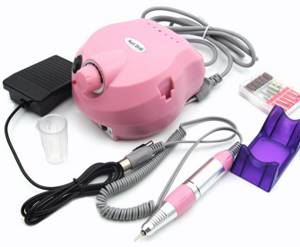
TNL Professional
The Korean brand TNL Professional is rightfully at the top of the ranking. Its specialization is the production of a huge range of products for the nail industry - from decorative elements to professional tools. For more than ten years, this company has been the world market leader in the development of manicure cutters. They are made from hard alloys, thanks to which they retain all their properties for a long time. At the same time, product prices are low compared to other manufacturers of high-quality professional tools.
TNL Professional produces the following types of products: for various actions on the nail and cuticle - with ceramic, diamond, metal, corundum, sand and silicone heads, for removing keratinized skin and calluses on the upper and lower extremities. In the products of the TNL Professional line you can find the necessary models for all kinds of actions.
manicure cutters TNL Professional
Advantages:
- easy to purchase in specialized stores;
- All types of these products are produced;
- production is made from practical materials.
- low price.
Flaws:
- not found.
HDFreza
On this line of the rating is the brand of a domestic distributor of products from Asia and Europe. He presents cutters made from solid diamonds and coated ones, hard alloys, ceramic, silicone, sand, corundum. Their quality and range are much better than the products presented by other manufacturers: there are all kinds of heads for various needs - from 1 mm to 1 cm, from “needle” to “corn” and “barrel”, which will be needed for treating nails, cuticles or rough skin.
The HDFreza brand represents a range of products that is one of the widest in Europe, which is why it is so in demand among nail artists in many countries. The products are very durable and retain functionality for a long time at a relatively low price; various promotions are also held. They can be purchased at retail or through the website of an official distributor who provides delivery of goods by mail or courier.
manicure cutters HDFreza
Advantages:
- The widest range of products is produced;
- high level of product quality;
- have universal sizes;
- low cost.
Flaws:
- Rarely available for retail sale.

Magic Bits
A domestic brand, quite young, it appeared in 2015. Its goal is to develop and produce simple and understandable products for nail care at home and in the salon. The components have undergone a very careful selection, especially for cutters that have successfully passed more than one test. The manufacturer focused on the range and quality of cutters, which are produced in various countries - Austria, Germany, Sweden, South Korea. According to the reviews of the masters, they are very comfortable to use. They do not require getting used to, they are wear-resistant, they can be used at maximum load for several months without loss of quality in a salon environment. The product is marked in the form of colored notches and brand engraving, which is very convenient for use and is a difference from other brands.
The entire range of Magic Bits cutters can be divided into two unequal parts - professional and for personal use. The latter are distinguished by heads that are safe for non-professional actions. Their range is much smaller than professional ones, but they can also be used by professionals to perform simple actions on the skin, cuticle and nail plate.
manicure cutters Magic Bits
Advantages:
- modern materials that are resistant to wear are used in production;
- manufacturer's markings and engravings;
- the most complete range;
- low price.
Flaws:
- not detected.
Middle price segment
Yoko
Using the devices, it will be possible to remove gel coating and acrylic, treat the nail surface, give the desired configuration, and remove rough and rough skin. Product samples have many different modifications, differing in the size and shape of the head.
Yoko products have the positive side of universal tail and head configurations suitable for any type of manicure apparatus used both at home and in the salon. They favorably withstand various types of processing and sterilization without affecting the service life of the instrument. A special point was noted for the ceramic milling machine with good approval from customers regarding the non-heating head during the working process.
manicure cutters Yoko
Advantages:
- high-quality alloys included in the tool;
- the shape and dimensions are universal;
- use at home and in salons.
Flaws:
- high price.
RuNail
The Russian brand has confidently gained a foothold on the next step, having earned fame abroad and in the domestic market in both the beauty and cosmetology industries. The product is used by hundreds of thousands of craftsmen and positive reviews are heard about the products due to the highest quality, durability, ease of use and wide selection.
The line includes high-carbon, diamond, mineral and garnet steel. This characteristic is determined by the use of domestic materials, which are being improved to meet the needs of specialists. Using good raw materials, it was possible to achieve ideal rigidity of the heads and long-term wear resistance during frequent work in establishments specializing in beauty. Having tried them once, professionals do not change the manufacturer in the future and remain faithful to the chosen brand. This indicates a high assessment of the product.
manicure cutters RuNail
Advantages:
- wide range;
- wear-resistant and hard heads;
- reasonable price;
- sale in any stores for professional craftsmen.
Flaws:
- are not observed.
Patrisa Nail
Among the common line of this category of devices that provide cosmetic care for hands and feet, there are instruments made of ceramics and hard alloys. The package includes basic attachments for hardware nail care, for treating nails, free edges and cuticles. The quality of the product is at a high level and nail technicians use the tools in salons. You can purchase Patricia brand products through online stores at a not too high cost.
manicure cutters Patrisa Nail
Advantages:
- nice design, size and shape;
- excellent quality nozzles;
- inexpensive price.
Flaws:
- small assortment;
- Not sold in all retail outlets.
In'Garden
The company, which has been operating for several decades, has a significant amount of experience and is engaged in the production of strong and durable gel varnishes, effective cosmetic products, as well as reliable manicure tools. Every year the list of product assortments is replenished. A small variety of instruments are always available for sale and are manufactured in Russia, the USA and Germany, making up the middle price segment.
There are corundum, diamond, hard alloy, silicone and carbide products of the most informative sizes and scales. With the help of a properly selected device, you will get high-quality treatment of the skin surface and nail areas. Accessories are easily sterilized and chemically treated at low temperatures.
manicure cutters In 'Garden
Advantages:
- high quality tool;
- affordable price category;
- ease of identification by shade of marks.
Flaws:
- minimal set of variations.
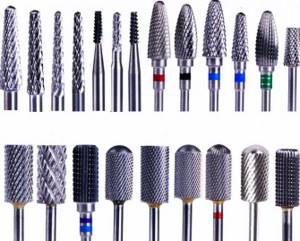
Irisk Professional
Domestic developer of a brand that has been a leader in the beauty industry for several decades. The company enters into contracts and cooperates with well-known enterprises in America, as well as other foreign countries, surprising with the high level of the brand, judging by the wonderful reviews on the forums of lash and nail artists. Noteworthy and noteworthy are manicure cutters made from the best raw materials (corundum, blue diamond, ceramics).
The common color in which the products are made is pink, pleasing fashionistas. The device is perfect for cutting cuticles on rough and hard areas of the skin, removing excess thickness from thick nails, as well as adjusting thin plates. Please note that the service life may be shortened due to frequent or incorrect use.
manicure cutters Irisk Professional
Advantages:
- a wide variety;
- pink shades;
- affordable price;
- sale in specialty stores.
Flaws:
- fast grinding of attachments with daily use.
Barrel Ball
The recently emerged American brand has managed to gain trust among avid craftsmen. Experts note a reliable manufacturer and quality product. The company has regular clients from a narrow circle of buyers. Purchasing products is not easy enough and even quite difficult, since offers are observed mainly in online stores.
The variety of assortment is represented by multiple types of tools that exhibit incredible resistance to rapid erasure. A distinctive feature of the product is its unusual size. Beginners will need some time to get used to the appearance. The products are used within the salon, but are not very convenient for home use.
manicure cutters Barrel Ball
Advantages:
- variety and wide selection of products;
- the abrasive has a long service life;
- low cost.
Flaws:
- rarely found on sale.
Premium models
Strong
The Saeshin company is a real long-liver in the market and has been working properly for 50 years. The Strong brand came out among other models with a huge range of materials, marketing solutions, new technologies and product groups. When the company launched nail treatment devices with motorized handles, its specialists immediately thought about producing branded devices.
This product stands out among others for its versatility, as it has a standard shank that fits any nail service device. Computer control is used in production. Thanks to this, the product goes on sale in perfect condition and is absolutely safe to use. They are distinguished by their compact size, ease of use and reliability. Carbide, diamond and ceramic types of tools, as well as polishers, are available for sale. Using devices with abrasive caps, you can quickly get rid of gel polish, give your nails the desired shape, and tidy up the side ridges.
manicure cutters Strong
Advantages:
- excellent quality;
- many varieties.
Flaws:
- high price.

Planet Nails
The Planet Nails brand took second place in the ranking. The manufacturer from Germany produces cutters of the highest quality. They are distinguished by the fact that they delight manicure specialists with their work for a very long time. However, their cost is 1.5-2 times higher than average. In Russia, this product has been successfully sold for 2 decades, which indicates its good quality and high trust among manicure professionals.
The Planet Nails brand produces manicure tools with a classic tip made of metal, diamond chips or ceramics. To prevent manicurists from getting confused, each type of product has color markings. You can treat your nails, trim cuticles and remove dead skin. The product is distributed through professional tool stores, but they are not always available due to high demand.
manicure cutters Planet Nails
Advantages:
- high quality;
- a large number of types of cutters;
- easy to recognize by the digital tag.
Flaws:
- not always available in the store;
- high price.
Ceramic manicure cutters
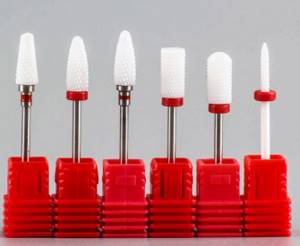
From left to right: cone, corn, corn, cylinder, rounded cylinder (barrel), bullet.
In fact, they are an analogue of carbide , only they are considered more wear-resistant - their service life is up to 3 years. They are made by baking a special composition. Ceramic cutters heat up less during operation, which provides greater comfort for the client. They do not clog, so they have no restrictions when working with leather or soft gels, such as original shellac or elastic bases. They can also be safely disinfected and sterilized according to all the rules.
One of the disadvantages is their fragility - impacts and falls of such cutters should be avoided, since even a small crack will lead to destruction of the working part. In addition, when removing hard artificial materials, such as gel and acrylic, the ceramics may turn out to be too soft, abrade against the material, and become “bald.”
The shape of ceramic cutters is often similar to TVS cutters, as it is directly related to the intended functions. The abrasiveness marking is the same as for fuel assemblies . The difference is that ceramics with black and green notches have a rough cut, but do not become stronger because of this, so trying to remove even gel build-up can lead to abrasion of the knives. So you can use ceramics to work on hyperkeratosis, but you shouldn’t try to cut acrylic with it.
Which cutters are better: ceramics or TVS
- Firstly, if we compare cutters of approximately the same quality, then ceramics will be more expensive than fuel assemblies. This pays off due to a longer service life.
- Secondly, if you need a cutter for removing artificial surfaces, then ceramics will allow you to quickly remove only soft gels and acrygel. But it will do this atraumatically, without heating up and without “sinking” into the soft base. Choose a red notch for this. If you regularly strengthen your clients’ nails with gel or use hard bases (strong, hard, builder), then it is better to choose a carbide with a blue notch for removing them.
- Thirdly, ceramics are better suited for working on thin and sensitive skin, since they heat up less. If you need to work with thickened and problematic toenails, then choose TVS.
Thus, it will be wise to choose a tool based on your professional tasks and needs.
Materials: comparison, pros and cons
The quality of the cutter depends on the material.
Ceramic
They contain corundum particles. They are very small, so this type of cutter is best suited for delicate tasks. They have a unique self-healing effect and are ideal for allergy sufferers without causing a negative reaction. Ideally, they treat the ptegirium and cuticles. On average, 1 ceramic nozzle lasts about 2 months.
Corundum
They are made from ceramic chips of a synthetic nature, a little like acrylic, resulting in a non-rigid structure of the nozzle, without corners and hard edges. They help gently remove sensitive skin without leaving scratches.
The material does not provoke tissue peeling and therefore with this attachment it is better to treat the side areas around the nail. It will last approximately 3 months.
Diamond
A universal variety due to the content of diamond dust. This attachment can be used on skin that has a high or medium level of hardness. If you need to carry out an operation that requires maximum precision, this precision cutter will be effective.
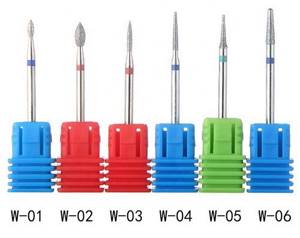
Work with acrylic nails (correction, design, extension) is carried out with attachments that last approximately 3-4 months.
Steel and carbide
Types of carbide manicure cutters are used on extended nails; for natural nails, such an attachment will be traumatic.
This is not the only function of such cutters, they:
- help make holes for rhinestones and piercings;
- effective against ingrown toenails and corns,
- last 4 months with active use.
Steel cutters are convenient for removing a weakened layer of the nail or working on hardened skin. The tools are made of high quality alloys; they correct extended nails and calluses well. They serve for six months.
Combined
Silicon carbide cutters seem rough at first glance due to the materials, but they are gentle on rough skin. They last approximately 6 months.
Silicone
This is silicone to which abrasive particles have been added. Usually not applicable on natural ones, only on extensions when you need to remove the glossy layer. Depending on the activity of use, they can last from 4 to 5 months.
Pomegranate
These products consist of pomegranate crumbs. Suitable for treating thin cuticles. The service life is 3 months.
Diamond manicure cutters

They are made by spraying (gluing) diamond chips onto a metal base-blank. Diamond cutters are the most popular among nail service professionals. This is ensured by the variety of their forms and functions, the versatility of the abrasive for working with various types of skin.
But such cutters are not suitable for completely removing gel polish, since their fine abrasive quickly becomes clogged. For the same reason, they are most effective on dry skin.
There are 2 types of diamond chips:
- Artificial. Most cutters cost from 30 to 200 rubles. Depending on the quality of manufacture, the service life of such spraying is from 5 procedures to 4 months.
- Natural. A rarer option that you can’t buy in the first store you come across. Cost from 500 rubles. It wears out much slower and gives the client less discomfort during processing.
Abrasiveness of diamond manicure cutters
Just like fuel assemblies, they are marked with a colored notch on the shank, just below the working part. Likewise, from coarse to fine abrasive:
- black - very rough processing;
- green - rough;
- blue - medium;
- blue+red - medium-thin;
- red - thin;
- yellow - superfine processing.
Blue and red notches are the most universal , since together with the correctly selected speed mode they allow you to work with any type of skin. Black ones are used only for working with artificial materials, green ones are used for removing hyperkeratoses. Yellow can be used on very thin leather with minimal processing. In the photo below you can clearly see the difference between diamond cutters with red and blue abrasive.

From left to right: flame, ball.
Except when working on wet, sensitive skin, these marking colors can be said to be interchangeable at different speeds. For example, you can either take a blue abrasive and set the mode to 15,000 rpm, or take a red one, but set the speed to 25,000 rpm. Depending on what is more comfortable for the client, the master and what thickness of skin is being worked with. Where you need to remove the thickness of the stratum corneum, it is better to choose a blue abrasive. But it is better to sand dry but thin areas of the skin with red.
How to choose diamond cutters
The actual hardware part of the manicure procedure is divided into 2 stages: internal processing and external. The internal one includes cleaning the nail sinus - removing the pterygium from the nail plate, lifting the “skirt” of the cuticle, opening cracks and grinding the internal parts of the side ridges adjacent to the nail. External - cutting the raised cuticle and sanding the periungual ridges. Hardware manicure techniques differ in the choice of cutters for these two stages.
Cutters with a narrowed nose are suitable for internal processing.
They can expand more or less smoothly, forming the main working surface - the cheek. The nose can also be sharp or blunt. These parameters determine at what angle to the nail you should work with such a cutter, as well as how functional the cutter is. The narrower, longer and sharper the nose, the deeper the manicure can be done.
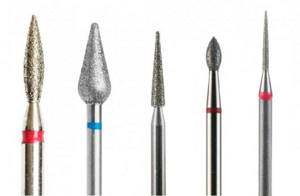
From left to right: flame, drop, cone, kidney, fissure (needle). Each shape can have different lengths, abrasiveness and diameter.
When working with these cutters, it is forbidden to press both the tip of the cutter and its most convex part, the belly, into the nail. During operation, the cutter lies on the surface being processed with its expanding barrel, called the cheek.
For external processing, cutters with a pronounced belly (spherical) are used.
The diameter of such cutters must be at least 2.3 mm, otherwise the cutter may plunge too deep into the tissue, like a bur, and injure them. The simplest model is a ball, and in the photo below you can see that it seems to fit into other models. Here the functionality depends on how convenient it is to cut the cuticle with the widest possible part of the cutter and how quickly the side ridges can be sanded.
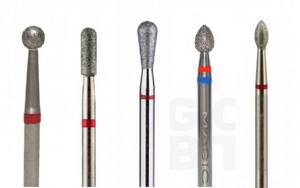
From left to right: ball, rounded cylinder (barrel), inverted pear, lentil, kidney. They can also differ in diameter and abrasiveness.
It is forbidden to work on the nail with spherical burs. It is allowed to lightly touch the nail, but under no circumstances should you try to clean off the pterygium that remains after internal processing.
Today, the flame, kidney, drop and cylinder are recognized as the most functional. With the right level of skill, it is possible to perform a manicure with any of the first three. The barrel is more popular than the ball due to the larger area of the side walls, which speeds up the work of the master.
Features of cutters by material of manufacture
When choosing cutters, you need to consider how you will disinfect them. There is no need to think that if you use the device alone, then you don’t need to clean the tools after work. This is not true. Each attachment has a set service life; the manufacturer writes how many sessions and at what speed the cutter is designed. Neglecting cleaning can reduce the life of the nozzle by 25%. And this is very unpleasant when you take the device, and instead of a diamond attachment there is a bare, cleaned rod.
Ceramic cutters from the manufacturer Feecy are softer than diamond ones, the cost of one attachment is from 25 to 100 rubles. The cutters are suitable for processing hard nails and cuticles. You can easily use the attachment for a home pedicure; the cutter is good at removing rough calluses and clearing away calluses. Pedicure step by step for beginners, see here...
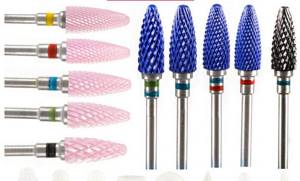
ORDER NOW
It is better for beginners not to use carbide or metal cutters. This is a professional tool with a fairly rough surface even with fine abrasiveness. One wrong press and you will make a cut on the nail, which will take a long time to heal and ruin the shape of the manicure.

ORDER NOW
Silicone and plastic cutters are used only once in the salon. For your home, you can take a set of silicone attachments that can be used to easily polish the nail plate.
Diamond cutters from the manufacturer Aprith , costing from 150 rubles. for a basic set of 7 attachments, it is ideal for polishing nails, processing cuticles and shaping nails. The set contains nozzles of varying hardness. The cost of a set for masters of 24 attachments is up to 500 rubles.
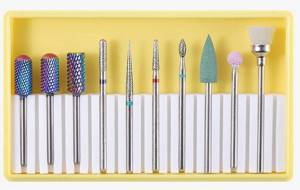
ORDER NOW
Corundum manicure cutters
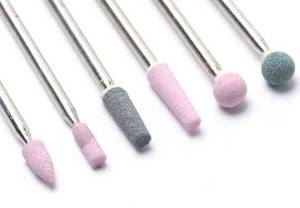
From left to right: bullet, truncated cylinder, truncated cones, balls.
They are an artificial porous stone that does not have a convex abrasive. Corundum (emphasis on O, corundum) cutters work due to small cavities on the surface of the stone, which capture particles of skin or material. For this reason, they are often called safe, since you need to try very hard to injure the nail plate with them. Fine grade corundum cutters allow you to sand dry skin to a shine, so it is recommended to use them at the end of a manicure or pedicure as a polisher.
But when working on wet skin, such cutters become more dangerous than diamond cutters - they draw wet skin into their cavities and tear it. At the micro level, of course. After this, you will have to spend a lot of time sanding, so it is better to use them only on normal and dry skin.
These cutters can be disinfected in a solution, like all instruments, but can only be sterilized in an autoclave. In a dry-heat oven, sterilization inside the cavities is not complete.
Abrasiveness of corundum cutters
These attachments for hardware manicure are not marked for abrasiveness, so you should rely on the description. In general they can be green, pink, blue and white. But one manufacturer of white will have a super-fine degree of processing, while another will have a coarse one. Pink corundum cutters are most often described as thin and are the ones chosen for grinding.
Form and function of corundum cutters
They are simultaneously similar to both diamond and fuel assemblies. Corundums never have a very thin and long nose, and large cutters intended for pedicure are not suitable for removing the thickness of the stratum corneum, only for grinding. A novice nail technician can replace some diamond cutters with them at the beginning of his career, in cases where: there is no need to do a deep manicure, the most gentle treatment is required, or there is no confidence in the correctness of the technique.
In addition, the photo shows truncated cone and truncated cylinder cutters. These attachments can be used as additional attachments to lift the cuticle. By pressing the truncated tip into the cuticle at an angle of 90° and using short stitches to describe a semicircle, like the hand of a dial, you can quickly and painlessly prepare the cuticle for the next cut.
Milling cutter is different - how many of you are there...
Manicure cutters are usually classified according to the material of manufacture and the degree of abrasiveness. The harder the material and the larger the cell, the rougher the work for which the tool is intended. In addition, for each cutter it is necessary to set its own machine speed. To avoid sawing through the nail, for example, to avoid injuring yourself by removing the skin and to avoid damaging the cutter. If we distribute according to the degree of rigidity, then the cutters are:
- ceramic;
- metal or carbide;
- diamond;
- plastic;
- silicone.
Universal tools are a separate category. But this does not mean that such a cutter can be used both for creating a shape and for polishing. Universal tools are, for example, diamond and metal nozzles for treating nails, silicone and ceramic for treating skin.
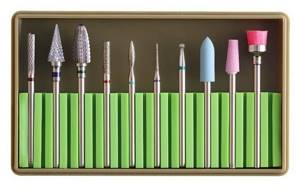
Silicone carbide grinders and polishers

Silicone carbide polishers are sometimes also called simply polishers, grinders, or even “Photoshop cutters.” These cutters can rightfully be called safe. Even if you press the rotating sharp nose of the cutter against a nail, the nose will be cut off, not the nail. These attachments are made of dense silicone with inclusions of carbide chips and are designed for final grinding and polishing .
Abrasiveness of SK polishers
Abrasiveness, like that of corundum bits, is not always related to color. Usually there are coarse, medium and fine abrasives; again, you should focus on the description in the store. The most functional are coarse and medium.
- Polishers with a narrowed nose of coarse abrasiveness can be used to clean the pterygium, smooth the eponychium, and polish dry skin to remove small scales.
- You can polish the leather to a Photoshop effect with a medium polisher.
- Larger polishers, with a rounded nose, medium and coarse abrasiveness, are more useful in pedicures for working with parchment skin - they will not thin the thin stratum corneum, but will remove peeling and prolong the effect of perfectly smooth heels.
These nozzles work at low speeds, about 5-7 thousand rpm. They need to be disinfected in solution and sterilized in a dry heater or autoclave.
What a beginner master needs: recommendations for choosing
A novice master only needs a minimum set of attachments for hardware manicure. It will be enough to purchase 5 basic ones.
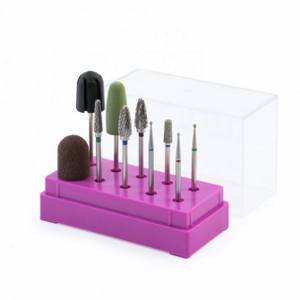
These include:
- diamond “flame” (boron) to cleanse the pterygium and push back the cuticle;
- diamond cone for lateral ridges, pterygium and cuticle;
- steel or diamond truncated cone for removing artificial turf;
- in the form of “corn” for polishing;
- ceramic cone for cleansing the sinuses and stripping the pterygium;
- diamond ball for removing cuticles.
Beginners are recommended to purchase cutters with a blue notch and rounded shapes, as they are the least traumatic.
Safe manicure cutters OneyClean
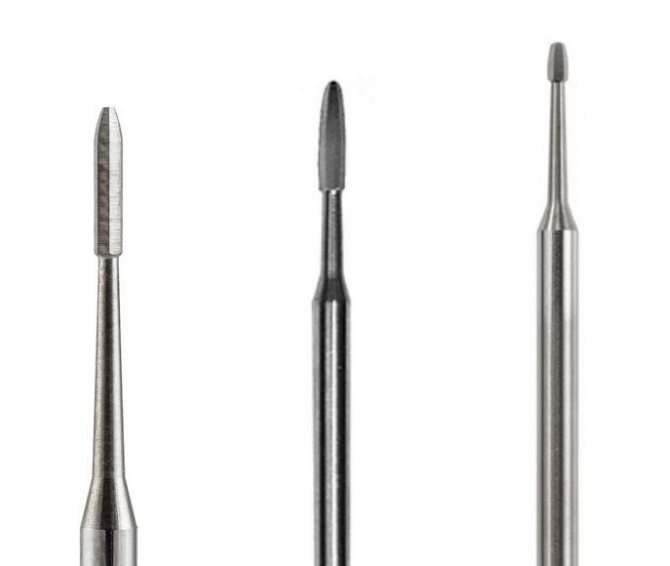
They differ in the length of the working part, shape and number of edges.
Steel cutters without abrasive. They are considered safe for the nail plate if the working technique is followed. Subject to a full tool processing cycle.
They have a specific purpose: opening the pocket under the cuticle, removing glues, cleaning the pterygium. With such a cutter it is impossible to deeply clean the sinus, sand the ridges or cut the cuticle. Such a narrow focus and low functionality makes it of little use for an experienced craftsman.
But it will allow even a beginner to work safely and not leave cuts on the nail plate. It can be useful as a means of instilling confidence in a novice master.
What brands of cutters are the most popular?
There are highly specialized attachments that are designed to perform one single action - non-functional.
- "Needle". The speaking narrow-elongated shape is suitable for lifting the cuticle and removing pterygium. You can use it to file your nails under the extended plates. Hold the tool parallel to the surface of the nail.

- The “cone” lifts and opens the cuticle. It is necessary to maintain an angle of 900.
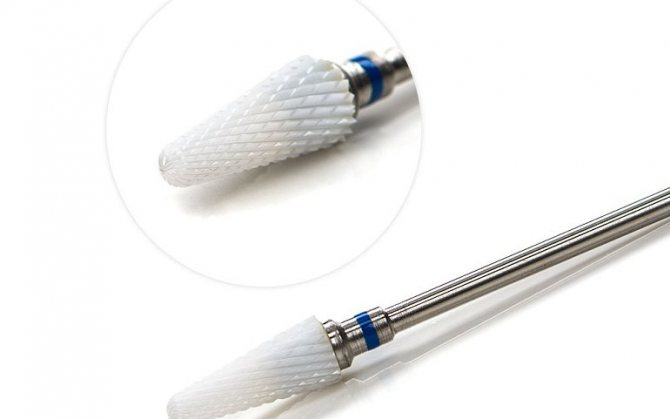
- The “ball” cuts off burrs, dead skin of the cuticle and side ridges. May have different diameters.

- “Bullet” perfectly removes pterygium.
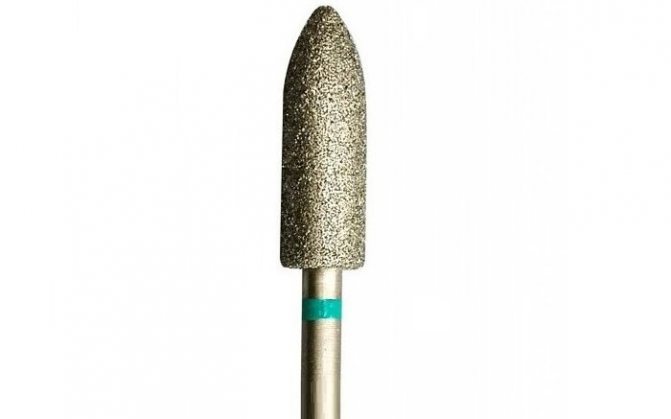
- “Corn” is used to remove old coatings, extended plates, and shape the nails along their length. Hold parallel to the nail.
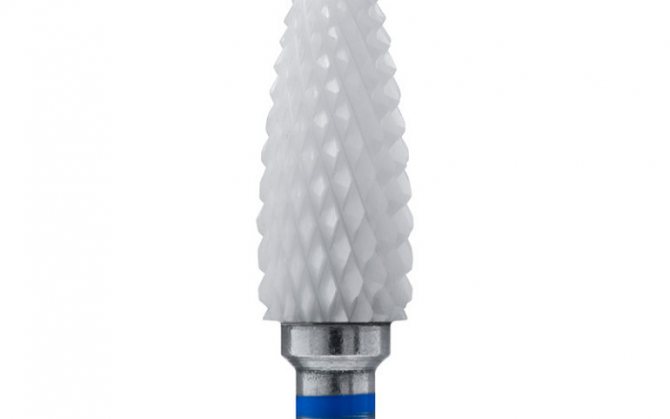
- “Cylinder” is suitable for grinding off excess length of plates. Due to the sharp edges, extreme caution is required when handling.

- The “roller” (rounded cylinder) does an excellent job of cutting cuticles and dead skin from the rollers.
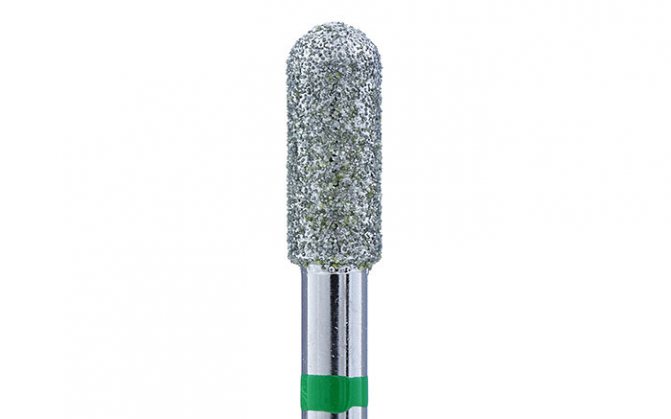
Also, companies offer universal cutters that can be used at several stages of work. They are called functional. Such attachments are the best option for both an experienced craftsman and a beginner, as they allow you to complete all processing without replacing cutters.
- "Flame". A universal tool in the master's arsenal. It has an elongated fan-shaped shape, different diameters. The cheeks are used to clean the cuticle, the nose is used to work with the sinuses, and the “belly” is intended for rollers. Hold at an angle of 450.

Rubber nozzles and replaceable sand caps

Nozzles and caps can be of different lengths and diameters. For example: 16*21, 13*19, 10*15, 7*13, 5*10.
They are most often used in pedicures to treat the skin. The caps are made using the sandpaper principle: abrasive sand is glued onto a cardboard or plastic base. The caps are placed on the rubber base immediately before use. Rubber nozzles undergo a full cycle of instrument processing (disinfection, PSO, sterilization). Replacement caps are disposable and must be disposed of after working with a client - they are removed from the base and thrown away.
There is an immutable rule in hardware pedicure and manicure: the larger the cutter, the lower the rotation speed. So, for the largest caps the speed should be no higher than 10,000 rpm, for medium 10*15 caps - no more than 15,000 rpm, for small ones 25,000 rpm is acceptable. But when working on the foot with a sand cap, high speeds can cause the client an unpleasant burning sensation and even a real burn. This inconvenience can be compensated by replacing cheap caps with more expensive caps, ceramic or corundum tips.
What are the differences between cheap and expensive caps
Traditionally, the abrasive of caps, like regular nail files, consists of aluminum oxide. Most Chinese manufacturers use it. This abrasive is the cheapest and is used not only in the beauty industry, but also in any other grinding industry.
More expensive German-made caps, for example, Lukas, have an abrasive made of silicon carbide. These materials differ in the shape of the crystals; in silicon carbide, they do not have sharp peaks and do not tear the skin, but cut it off, due to which the effect of the procedure lasts longer. They allow you to polish the surface of the leather to a shine. In addition, Lukas produces not only hemispherical caps, but also elongated cylindrical and conical ones. The ability to select a form for the task speeds up and simplifies the procedure.
Lukas Thermo caps have been developed to help pedicurists - they change color to red when heated, so the master can quickly find his bearings and prevent overheating of the surface being treated.
The abrasiveness of replacement caps for pedicures. How to choose
The abrasiveness of the caps is measured in grit, like that of files. Grit is the number of abrasive grains per square centimeter. Accordingly, the fewer grains, the larger they are, and the coarser the abrasive.
- Coarse abrasive: 60-100 grit . Designed for cutting away the thickness of the hard stratum corneum: hyperkeratosis, corns. They cannot work on thin soft leather. It is recommended to use a small nozzle diameter, up to 10mm.
- Medium abrasive: 120-180 grit . This grit size is suitable for removing dry skin and refining rough areas of the foot after rough abrasive. They can also remove calluses on the front rollers of the fingers. Do not use it on thin, healthy skin.
- Fine abrasive: 240 grit . It would be wise to choose a larger diameter, up to 13mm. With this cap you can treat the entire thin, dry surface of the foot, including the toes and areas treated with previous, coarser caps. It no longer goes deep into the skin, but effectively exfoliates dry particles from the surface.
- Superfine: 320-400 grit . Grinding, you can also choose a larger diameter and a lower speed. This grit is good for final sanding of the entire surface of the foot. It will cover small scales and give the client a week of feeling completely smooth feet.
How to properly remove cuticles with a device
Don’t think that hardware cuticle removal is only possible in a beauty salon. In any household appliance store or specialized studio store you can purchase cuticle treatment machines that are allowed to be used at home. They differ from professional ones only in the small number of attachments and power. However, lower power is even safer. The main thing is to choose a machine with a speed of at least 2000 rpm. This is quite enough to do clean work.
Photo from the site: medaboutme.ru
As for the nozzles, a minimum set will be enough, and if desired, you can purchase the missing cutters.
The cuticle removal procedure is carried out in the following steps:
- The cuticle is lifted and moved back to the base of the nail bed. Then the keratinized layers of skin are carefully removed from it using a cutter.
- Next comes one of the most important work - removal of the pterygium. Here you will need to act delicately and with great care, because the work is carried out in close proximity to the nail plate. The pterygium must be removed carefully, moving the cutter almost parallel to the nail, without pressing on the plate itself.
- After the pterium has been cleaned, you can begin to work on the lateral ridges and sinuses. All burrs and microcracks are also carefully polished.
- At the final stage, the fingertips are treated - all keratinization and calluses around the nail, as well as in the subungual area, if any, are removed.
Photo from the site: rc-garaj.ru
When performing work on cuticle processing, a number of rules should be followed:
- Carry out work at speeds of 15,000 - 20,000 rpm. It is with this power that the keratinized layers are quickly and efficiently cleaned off and there is no unpleasant sensation.
- You cannot stay in one place for more than 4 seconds. – there is a risk of burning the skin.
- Do not press the cutter on the skin and nails, otherwise you may cause a wound.
- For each processing zone, use a suitable cutter option (more on this in the next section of our review).
- When working with a cutter, you should direct it in the opposite direction from its movement. It is with this technique that keratinization and dead skin cells are removed.
Important
You should use different cutters to remove cuticles on your arms and legs. Firstly, this requirement is dictated by hygienic considerations - toes accumulate more dirt and bacteria than fingers and, using the same cutters, you can spread an infection or fungus from your feet to your hands. Secondly, the cuticle on the legs is coarser and its processing will require cutters with a higher abrasive coating, while for the hands a finer grain surface of the cutters is sufficient. Rough abrasion can damage the delicate parts of the fingers.
Pedicure discs and replacement files
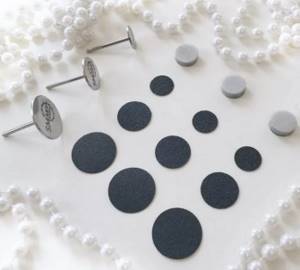
Can be of different diameters and abrasiveness.
A current replacement for pedicure caps, speeding up the pedicure procedure several times. The discs are made of steel and undergo all stages of tool processing. Disposable files on a self-adhesive base have the same gradation of abrasiveness as pedicure caps. The abrasive of the files, with the exception of Chinese fakes, is made of silicon carbide. The selection of abrasiveness, zones and processing sequence are similar to caps.
Discs, unlike caps, on the contrary, require high speeds. The thinner the abrasive, the higher the rotation speed of the disk should be set and the smaller the angle of the disk to the surface being treated should be.
Not suitable for novice craftsmen, as they are demanding on the accuracy of the work technique. A novice master can accidentally burn a client with unpleasant consequences. For this reason, those interested in this technique should undergo advanced training in working with disks.
What is and why do you need a milling machine?
A milling machine is a device that allows you to do a manicure using special attachments (cutters).
The types of such products differ according to a set of characteristics, which include:
- speed and power (both indicators should be high);
- speed (not less than 3000 per minute);
- internal vacuum cleaner to collect sawn wood;
- overheating protection;
- Can be used for manicure and pedicure.
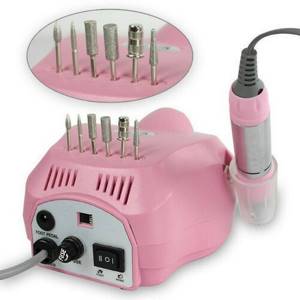
It is important to remember: only a professional can use a professional device; a home technician risks damaging the nail.
The advantages of cutters are:
- comfort of working with them;
- reducing time;
- minimum cuts and wounds.
Other manicure attachments
Cleaning Brushes
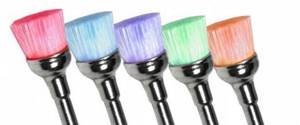
If the tool is processed correctly, there is no need for them. Only if the tool is clogged with something, for example, undried gel polish, such brushes may be useful to you. When purchasing, choose nylon ones. Do not use metal brushes for cleaning, as... they can damage the abrasive of diamond cutters or scratch other bits.
Felt tips for adding gloss
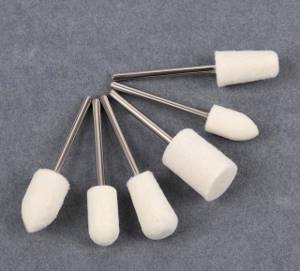
Can be used in a manicure procedure without a decorative coating to polish the surface of natural nails to a glossy finish. Subject to disinfection, but not sterilization in dry heat.
It’s not entirely clear what and how to sterilize? We have a separate article on how to properly process manicure tools, including cutters, with a detailed description of each stage.
Still have questions? Ask them in the comments!
How to sterilize cutters?
Since the attachments are reusable, their sterilization is mandatory.
For this purpose, special disinfectants have been developed, among which the main ones are:
- Alaminol;
- Optimax;
- Gigasept;
- Blanidas;
- Korzolex.
Such products are available in concentrated form; you should not disinfect instruments directly with such a solution; preparation will be required. It will consist of adding 3 tbsp to 1 liter of cold, clean water. l. any of the drugs. Antiseptic can be prepared at home.
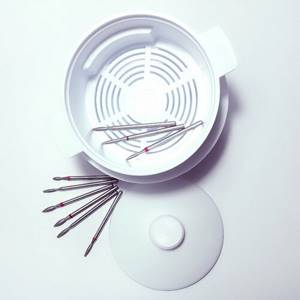
For this:
- Pour 100 ml of 70% alcohol into a glass container.
- Add 10 g of borax and stir.
- Add 30 g of potassium permanganate to the composition.
The cutters are placed in a container, and it is placed in a steam bath for 15-20 minutes.
Safety rules when working with cutters
• Make sure that the number of revolutions does not exceed the permissible values for the shape and material of the nozzle.
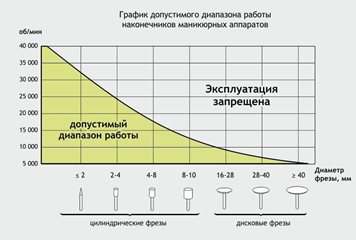
• The master must rest both elbows on the surface of the table - it is impossible to work with the device “in weight”.
• Contact of the cutter with the nail plate is no more than 3 seconds, movements should be smooth and sliding.
• The cutter must move in the direction of rotation, otherwise it may slip.
• Make sure that the machine and the cutter are as parallel to the table as possible. If you need to reach hard-to-reach places, turn the client’s finger rather than the device.
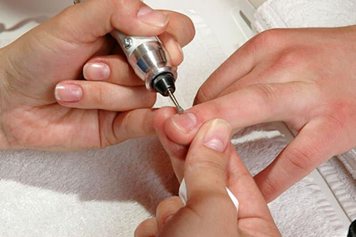
• The device can only be turned off and stored with the nozzle or special plug inserted.
If you notice an unusual vibration or smell, turn off the device immediately!
Why do cutters need colored notches?
The purpose of the cutter will also be indicated to you by the colored notch in the form of a rim at the base of the tip.
It tells us the rigidity and depends on the cutting of the cutter. The rule is very simple: the darker the color, the harder the cutter is: 1. Black
color indicates the coarsest cut and the highest hardness. This means that this attachment is only suitable for working with extended nails.
2. Cutters with green
strips are coarsely cut and are needed to remove old artificial material.
3. Blue
The rim tells us about the medium degree of hardness. They can already be used on the skin around the perimeter of the nail plate.
4. Red
the color of the notch is already a fine cut. This cutter is suitable for both skin and nail surfaces.
5. Yellow
The cutter is very soft. It can be used on thin skin and on natural nails.
6. Nozzles with white
rims have the lowest degree of rigidity, so they are chosen for skin with increased sensitivity and meticulous work on the nail itself.
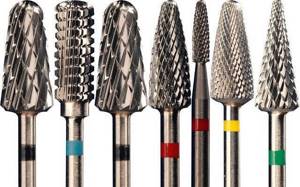
Cleaning and sterilization
To ensure that the manicure is safe, that no abscesses form or become infected, the attachments are sterilized before and after the procedures. Before disinfection, they are cleaned of dirt and grease. The simplest method is to rinse the cutters under running water and then wipe with a cotton swab dipped in nail degreaser.
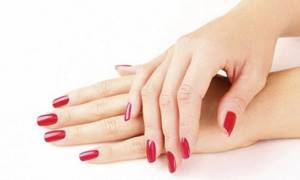
Cleaning ceramic and carbide attachments from dust after a manicure is done with special brass brushes. Heat treatment will eliminate harmful microorganisms. Only high-quality attachments without plastic holders can withstand it. This requires:
- Place the nozzles in hot water and boil for 15-20 minutes.
- Then they are taken out of the water with tongs, laid out on a paper towel, and left to dry.
- Then the products are put into a case.
Metal nozzles are disinfected at home using an oven. It must be heated to maximum temperature and placed on a cutter tray. It is important that the nozzles do not touch. The tools should be kept in a closed oven for 15-20 minutes, and then taken out and allowed to cool. Then the attachment can be packed into a case.
Preparing for work
How to insert the attachment into a manicure machine? There are several types of clamp. This determines the correct insertion and removal of the nozzle:
- Automatic clamping. The product is easy to insert. After turning on the machine, the nozzle will be clamped.
- Turning. The cutter is opened or clamped by turning a special ring on the handle of the equipment.
- Screw. This is the cheapest clamp option and is easier to repair than others. It works like this: the cap that secures the nozzle into the collet is turned 1-2 turns.
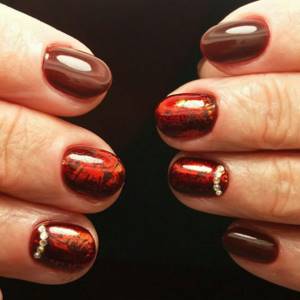
How to remove the attachment from a manicure machine? This procedure depends on the types of clamp mentioned above.
How to choose a device for hardware manicure?
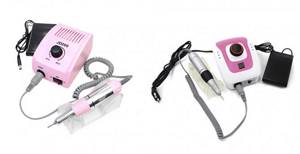
The devices can be for home or professional use. They differ in configuration, size, power and rotation speed. For interior devices, the latter is more than 25 thousand revolutions per minute. For home manicure, you do not need a highly equipped device, since there is no need to handle complex cases.
Choose light weight and compact dimensions; it is better if the device runs on batteries or a built-in rechargeable battery - this way you can take it with you while traveling.
It is more convenient if the device comes with a set of necessary cutters: it is quite difficult for a beginner to immediately figure out which attachments he needs.
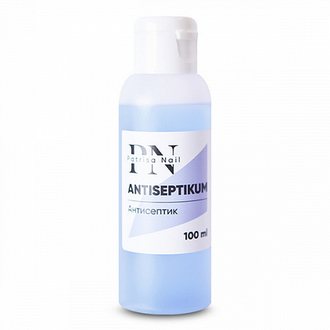
-63%
Patrisa Nail, Disinfector, 100 ml
Disinfectant for hands and tools. Alcohol content: not less than 60%.
(30)
350 RUR 130 RUR
350 RUR 130 RUR Buy
Recommendations
If you have purchased a device and cutters, then it is advisable to familiarize yourself with tips on how to use manicure attachments:
- The procedure must be performed only on a dry nail plate. Otherwise, it will heat up, which will lead to discomfort. In addition, wet areas are less easily processed.
- When using a combined or customizable device, you need to set the speed to a speed of up to 10 thousand. If it is higher, the nails will be erased due to lack of processing experience.
- Do not press the clipper close to your nail, applying pressure during operation.
- The first few times you need to practice using silicone tips. Then, when working with rough cutters, you will know how to hold them correctly.
